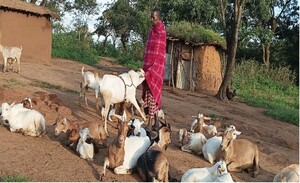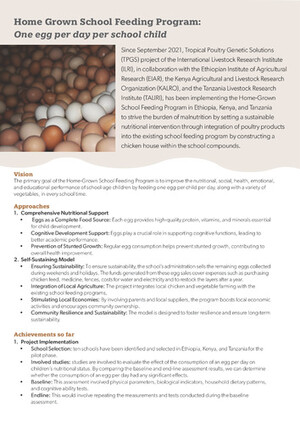
Evaluation of fertility, hatchability, and growth performance of indigenous, sasso and their F1 cross chicken genotypes in Southern Ethiopia
Abstract
Three chicken genotypes were involved in the study with the objectives of evaluating fertility, hatchability, and growth performance of three chicken genotypes. For the experiment, 1550 (600 of indigenous, 450 of Sasso, 500 of crossed) eggs were labeled and incubated. The data were analyzed using SAS. Relatively higher proportion of fertility was observed for the eggs collected from Sasso (89.6%) followed by crossed eggs (72.8%). Correspondingly, hatchability was higher for Sasso. Body weight was increased from 27.9 to 321.7 g for indigenous, 36.8 to 431.2 g for Sasso, and 32.4 to 353.4 g for crossbred from week0 to week7. Agroecology by genotype had a significant (p<0.05) influence on the growth performance of the chickens during week11 and week15. The interaction between agroecology and sex was significantly influenced growth rate of the chickens in all weeks of their age, except the chickens at their 11th weeks of age. Genotype by sex interaction had highly significant effect in the growth performance of the chickens at their 11th, 15th, and 20th weeks age. The chickens' growth has been influenced by the interaction among agroecology, genotype, and sex. Higher proportion of indigenous (22%) and Sasso (24%) birds were died in highland in between W7-13, however higher proportion of crossbred birds were lost in lowland for same week interval. Considering the most parametes of chickens, midland agroecology is more promising for their production. This is because, better feed resources, climatic condition, and awareness of farmers how to manage their birds. except the chickens at their 11th weeks of age. Genotype by sex interaction had highly significant effect in the growth performance of the chickens at their 11th, 15th, and 20th weeks age. The chickens' growth has been influenced by the interaction among agroecology, genotype, and sex. Higher proportion of indigenous (22%) and Sasso (24%) birds were died in highland in between W7-13, however higher proportion of crossbred birds were lost in lowland for same week interval. Considering the most parametes of chickens, midland agroecology is more promising for their production. This is because, better feed resources, climatic condition, and awareness of farmers how to manage their birds. except the chickens at their 11th weeks of age. Genotype by sex interaction had highly significant effect in the growth performance of the chickens at their 11th, 15th, and 20th weeks age. The chickens' growth has been influenced by the interaction among agroecology, genotype, and sex. Higher proportion of indigenous (22%) and Sasso (24%) birds were died in highland in between W7-13, however higher proportion of crossbred birds were lost in lowland for same week interval. Considering the most parametes of chickens, midland agroecology is more promising for their production. This is because, better feed resources, climatic condition, and awareness of farmers how to manage their birds. and 20th week age. The chickens' growth has been influenced by the interaction among agroecology, genotype, and sex. Higher proportion of indigenous (22%) and Sasso (24%) birds were died in highland in between W7-13, however higher proportion of crossbred birds were lost in lowland for same week interval. Considering the most parametes of chickens, midland agroecology is more promising for their production. This is because, better feed resources, climatic condition, and awareness of farmers how to manage their birds. and 20th week age. The chickens' growth has been influenced by the interaction among agroecology, genotype, and sex. Higher proportion of indigenous (22%) and Sasso (24%) birds were died in highland in between W7-13, however higher proportion of crossbred birds were lost in lowland for same week interval. Considering the most parametes of chickens, midland agroecology is more promising for their production. This is because, better feed resources, climatic condition, and awareness of farmers how to manage their birds. Considering the most parametes of chickens, midland agroecology is more promising for their production. This is because, better feed resources, climatic condition, and awareness of farmers how to manage their birds. Considering the most parametes of chickens, midland agroecology is more promising for their production. This is because, better feed resources, climatic condition, and awareness of farmers how to manage their birds.
Citation
Bekele, B., Melesse, A., Esatu, W. and Dessie, T. 2022. Evaluation of fertility, hatchability, and growth performance of indigenous, sasso and their F1 cross chicken genotypes in Southern Ethiopia. Veterinary Integrative Sciences 20(3):597–608.










